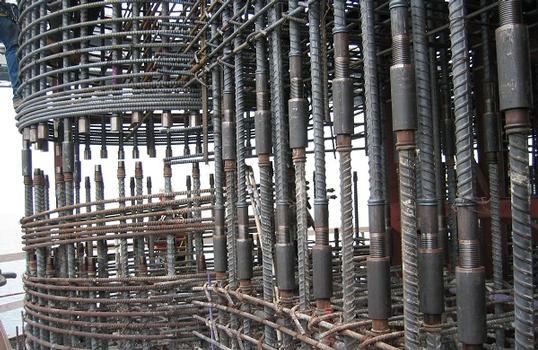HRC 400 series reinforcement couplers
High performance reinforcement couplers with proven and documented quality. Exceed all known requirements for reinforcement couplers.
General advantages of mechanical splices
- save material by eliminating lap splices
- reduce congestion, ease and speed up the reinforcing work and improve casting conditions (leading to improved quality of the finished product)
- give more flexibility for the formwork and allows for the use of alternative formwork systems
- allow flexible placement of access openings for prestressing jacks etc.
- improves construction safety and accessibility of workspace by removing protruding rebar
Special advantages of HRC 400 Series reinforcement couplers
- fulfil and exceed all known requirements for rebar couplers
- exceed the actual stress- and strain capacity of all reinforcing grades, independent of variable steel heats, in other words: a failure will occur outside the splice → full ductility is available
- tapered threads provide fast, simple, self-locking installation
- reliable quality control by easy visual inspection
- coarse threads - robust against tolerances and rough field conditions on site
- HRC 490 Position Coupler allows splice adjustment without turning the rebar (cast- in bars, pre-tied reinforcement, bend bars)
- can be combined with other HRC products
HRC 400 - Reliable quality control through visual inspection
HRC 400 reinforcement couplers utilise tapered threads. This is functional because this type of thread is easy to install and self-locking. For all tapered threads it is crucial that the threads are fully engaged to be able to activate the full capacity of the connection. Use of a torque wrench is no guarantee for this, because the threads might be blocked by sand, dirt etc. Much torque can than be applied without the threads being fully engaged.HRC 400 Series couplers offer a reliable and easy quality control by simple visual inspection: no full thread must be visible – then one knows the threads to be fully engaged. HRC recommends applying torque for specially demanding applications (fatigue loads, special slip demands, earthquake loads).
References
Relevant Websites
- About this
data sheet - Product-ID
44 - Published on:
18/10/2010 - Last updated on:
30/01/2016






